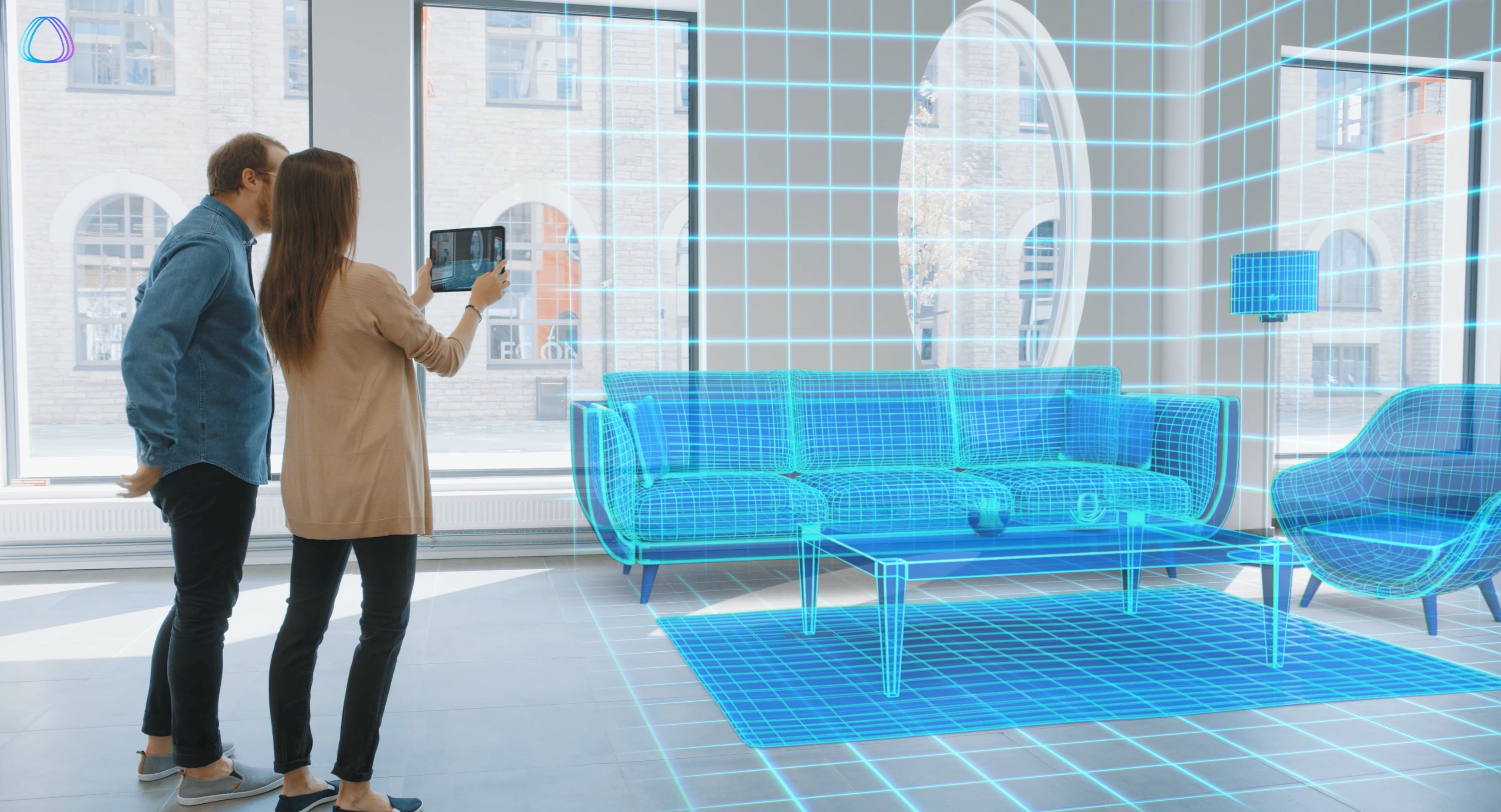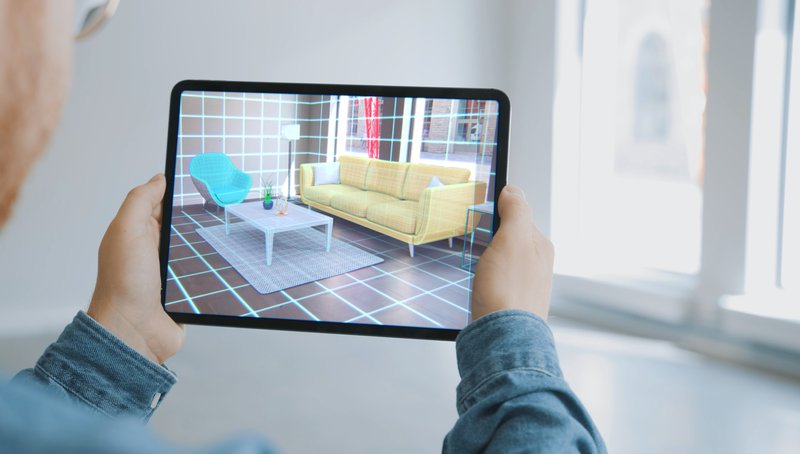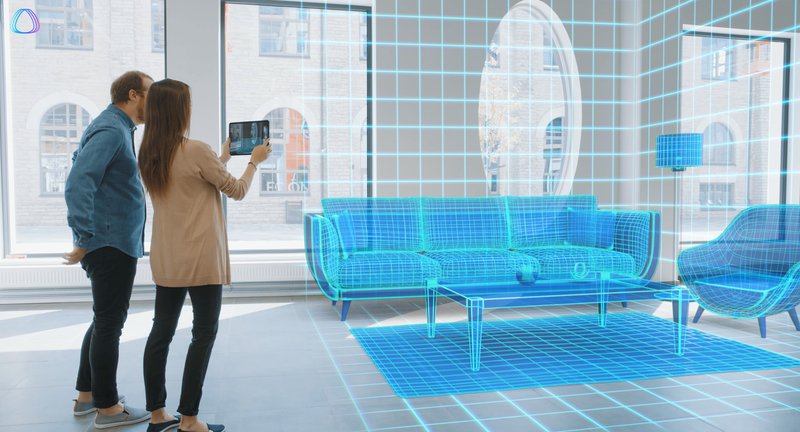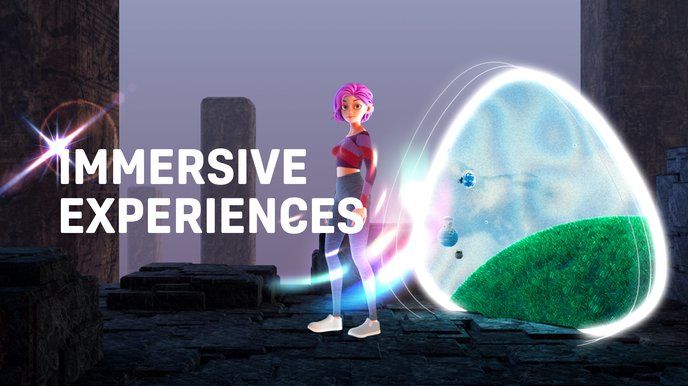How Does AR Work? The Technology Powering a Hybrid Reality

Extended Reality
5-minute read
Augmented reality (AR) has gradually and quietly permeated everyday life, enabling hybrid experiences that seamlessly merge digital and physical realities. What is AR exactly and how does it work? First introduced in 1968 by computer scientist Ivan Sutherland, AR has evolved from a heavy head-mounted device to a sophisticated technology with vast applications powered by sleek handsets and headsets. Today, let's look at how it’s changing the way we work, play, and interact with each other.

What is AR?
AR is a technology that overlays digital content — such as graphics, sounds, or other data — onto the real world, creating a version of reality that is interactive in real time. The content can range from simple text annotations to complex 3D models and animations, all integrated into the user's view of the physical environment.
VR vs. AR
To better understand AR, it's essential to differentiate it from virtual reality (VR), another immersive technology that often gets lumped together with AR. While both AR and VR aim to provide immersive experiences, their approaches fundamentally differ.
VR immerses users in a completely digital environment, cutting off their view of the physical surroundings and replacing it with a simulated one. Advanced VR headsets like the VIVE XR Elite enable total immersion, enveloping users' senses and disconnecting them from reality.
AR modifies the physical space with digital elements that are visible and interactive through a screened device, such as a smartphone, tablet, or AR glasses. Rather than replacing reality, AR supplements it, allowing users to see and interact with their physical environment and the overlayed digital content simultaneously.
How Does AR Work?
The seemingly effortless experience of interacting with AR content results from a complex process involving several technological innovations working in harmony. The three key components include sensors and cameras, processing, and projection.
Sensors and Cameras: Capturing the Environment
The AR experience begins with the device's sensors and cameras, which capture the user's environment. These sensors can include GPS, accelerometers, gyroscopes, magnetometers, and depth sensors, among others. Together, they detect and comprehend the user's location, orientation, and movements in real time.
The camera, a crucial component, captures live images of the physical environment, which the AR system then analyzes to identify specific patterns, objects, or features. In apps for interior design, the camera captures the contours of a room, recognizing walls, floors, and furniture pieces. This information is the foundation for accurately placing digital elements within the space.

Processing: Analyzing and Positioning
Once the environment is captured, the sensors and cameras send the collected data to the device's processor, where the heavy lifting happens. The processor uses algorithms and machine learning models to analyze the data and understand the environment. It identifies critical features, such as flat surfaces, edges, and specific markers, that can be used as reference points for placing digital content and objects.
The processing stage is crucial because it determines how the digital elements will interact with the physical world. For example, in the popular smartphone game Pokémon GO, the processor identifies open spaces where a digital creature can appear, ensuring that it looks naturally integrated into the environment.
Projection: Displaying Digital Content in the Real World
The projection phase is next. This is typically done through the device's screens or lenses, showing a combined view of the real-world environment and digital augmentation. In more sophisticated systems, such as those using AR glasses, projection might even involve holographic displays that overlay digital images directly onto the surroundings, adding a new level of realism.
The challenge in this stage is ensuring that the digital content appears natural. This requires precise calibration of the sensors and processing algorithms to avoid issues like misalignment, lag, or distortion, which can break the illusion.
What Are the Different Types of AR?
AR is not a monolithic technology. It comes in various forms, each tailored to different applications and situations. Here are the two primary types:
Marker-Based AR
Marker-based AR, also known as image-recognition AR, relies on specific patterns or markers, such as QR codes or predefined images, to trigger the display of digital content. When the camera detects a marker, it processes the image and overlays the corresponding digital content onto the real-world view. This type of AR is commonly used in marketing, education, and gaming.
Marker-less AR
Marker-less AR, sometimes called location-based AR, leverages the device's GPS, accelerometers, and digital compasses to determine the user's location and orientation and then overlaps digital content onto the environment and user movements. It is widely applied in navigation apps, where AR helps users find their way by adding arrows and text onto real-world streets.
What Are the Applications of AR?
AR has proven its worth across various sectors, moving beyond its initial novelty status to become a critical tool in business, entertainment, and everyday life. Here are some notable examples:
Business and AR
• Retail: AR is revolutionizing the retail industry by allowing customers to visualize the "result" of potential purchases. The IKEA Kreativ app enables users to scan their rooms and arrange virtual furniture items within them to see how they fit and look. These use cases improve the shopping experience and help customers make more informed decisions, reducing the likelihood of returns and increasing satisfaction.
• Training: In training programs, employees can learn in controlled simulations to avoid risks associated with real-life training. Training for operating heavy machinery, the fire department, and combat tactics are just a few examples that come to mind.
Social Media and AR
The VIVERSE Worlds app exemplifies AR in social platforms. With its recently upgraded AR features, users can greet friends with personalized digital elements, adding a layer of interaction to real-world socializing. The app also incorporates motion capture (mocap), allowing users to create and share dynamic experiences with others in the VIVERSE community and events.
![]()
Gameplay and AR
AR has innovated new ways for gamers to interact with their environments. Pokémon GO is perhaps the most famous example, allowing players to find and catch virtual Pokémon in real-world locations. The game's success has inspired a new genre, including the popular Monster Hunter Now, which also leverages AR to bring digital creatures to "life."
Tourism and AR
In tourism, AR brings additional layers of information and interactivity. Virtual tours, historical site reconstructions, and enhanced in-person guided experiences are just a few examples. The Time Traveler app allows users to see historical events unfold in the locations where they happened, adding a new informative twist to the visit.
This in-depth look into how augmented reality works and its various applications highlights the vast potential of the technology. As AR continues to mature, whether navigating a city, gaming on a mobile device, or enhancing job training, it will undoubtedly play a role in shaping the future of human interaction and connectiveness.


